30 Minute At-Home Strength and Conditioning Routine
- Isobel
- Dec 14, 2022
- 11 min read
During class, we mainly focus on our dance technique, artistry, learning new skills/steps, and performing choreography. However, do you feel like you can’t actually do a step to the best of your ability or get too fatigued towards the end of a combination to finish it nicely in ballet class? Do you often think, “if only you had more turn out for my retire passe” or enough stamina to jump higher for assemble? Strength and conditioning can help identify your weaknesses and improve your dancing in class.
Strength and conditioning are selective exercises used to enhance movement quality and improve physical performance. These exercises can be a mix of dynamic, aerobic, agility-focused and static movements. Strength and conditioning coaches usually work with athletes of a particular sport. While ballet and dance are not technically considered competitive sports like football or basketball, dancers are akin to athletes in that their primary vehicle of performance are their bodies.
Until recently, a dancer’s training routine only really consisted of daily ballet class for their traditional classical repertoire. Cross training was with other fitness types was not common. Nowadays, professional dancers are asked to perform longer seasons with more intense repertoire ranging from a variety of styles from classical ballet, contemporary, and even modern. As a result, more and more dancers are currently seeking out strength and conditioning cross-training regimes in order to master the wide range of repertoires and perform better on stage whilst preventing injuries and burn out. Today’s professional dancers are often seen hitting the gym and doing barbell squats, in a pilates studio on the reformer, or just running on the treadmill! Dancers are becoming more and more recognized as athletes in their own right (dance is athletic!), whilst maintaining their signature artistry and aesthetic.
There are two parts to strength and conditioning:
Strength training – your good old fashioned resistance training using body weight or actual weights for exercises like barbell deadlifts, push ups, plank, etc. These exercises will increase muscle gain for strength.
Conditioning – more focused on aerobic/anerobic training for cardiovascular health. Aerobic exercise includes typical cardio such as running, cycling, swimming over a sustained period of time. Anaerobic exercises involve quick bursts of energy for shorter periods of time like HIIT training or sprints. Conditioning exercises will increase muscle endurance for stamina and energy.
Adding both strength and conditioning exercise as supplements to your regular dance classes can transform your technique and make you improve faster and progress further.
Try this 30 minute strength and conditioning routine at home and watch your technique in class improve faster!
What you will need:
Yoga mat
Optional props: theraband, soft ball, yoga block
Warm Up
Roll Downs
Stand up nice and tall with feet hip width apart. Feel yourself “pulling up” from your lower abdominals all the way up through the top of your head, at the same time pressing your feet into the floor. Begin to roll down into a forward fold by first tucking your head into your chest and rounding the back. Focus on rolling down your spine vertebrae by vertebrae until you touch the ground. Take a breath here. Then, roll up the opposite way until you are standing straight again. Repeat 4x, working on your breath and articulation of your spine.
Neck Stretches
Tilt your head to the right, left, up and down. Hold for a couple breaths in each position. You can use your hands to intensify each stretch. After, gently roll your head clockwise and counter clockwise.
Shoulder Rolls & Arm Circles
Roll your shoulders forwards and backwards 4x each. Then, circle your arms in the same manner 4x each.
Dynamic
Since our warm up was a bit more on the gentle side, let’s get the blood flowing and heart rate up with some dynamic anaerobic exercises that engage the full body.
Squat Jumps
My favorite exercise to help those that want to jump higher and have that explosive jump with lots of hang time in the air.
Place your feet the width of the mat with the toes slightly turned out (not second position, but not parallel). Hands come together into your heart centre. Bend the legs into a squat position – sit back in the heels and allow the body to hinge forward slightly whilst keeping the back straight. Push off the floor into a jump with toes pointed and shoot the arms down to your sides. Your posture will straighten out in your jump. When you land, come back into the squat position.
Really expell all your energy into the floor as you jump like a rocket ship pushing up into the sky.
Repeat 16-20x for 2-3 sets
Rises / Releves
Let’s do our rises/releves today in a small first position – 45 degrees only (also called Pilates V). Rise up onto demi pointe and keep the heels together. This will force your to rise up onto your big toes, keeping the correct ankle alignment and not sickling. Control your heels when you lower, so you don’t “drop” on the way down.
Repeat 16-20x for 2-3 sets
Core Series
Come onto your mat. Before we get into our pilates-style core routine, let’s first find our pelvis and spine alignment.
Pelvis and Spine Placement
Lie down onto your mat. Bend your knees and place your feet hip width apart. Place your hands onto your lower abdominals. Feel the natural curve in your back resulting in the little gap between your back and the mat – this is neutral spine. You should be comfortable in this position and it should feel natural to lie this way.
Now, tilt your pelvis up and press your lower back into the mat, eliminating the gap. This is posterior pelvic tilt or imprint spine.
Let’s do the reverse now: exaggerate the arch your back and push your pelvis back into the mat. There should now be a huge gap in between your lower back and the mat. This is anterior pelvic tilt.
Rock through posterior and anterior pelvic tilt through neutral spine to feel how your back and core are affected in each position. Repeat 4x.
Bonus Exercise: Leg Slides
Start in neutral spine position. Arms long by your side, palms down. We are going to test our strength and stability in this position so make sure you activate your core muscles.
Flex your feet and slide your right heel out along the mat, then draw it back in. Repeat with the left leg. Make sure you don’t compromise your neutral spine position when you slide your legs out. If you cannot maintain neutral spine, limit your leg extension to where you can keep your pelvis and spine neutral. Repeat 4x on each leg.
For our core exercises, we are going to be working in imprint spine as our exercises will occur with legs off the floor. However, if you are experienced in pilates or have a strong core, try performing these exercises in neutral spine to feel a difference in muscle engagement in your abdominals. Since this is a core series, try to do these exercises one right after another without resting unil the very end! The whole core series is about 6-7 minutes.
Toe Taps
Find your imprint spine. Lift each leg up to tabletop position. Legs should be held at a 90 degree angle.
Keeping the same angle of the leg, lower your right foot down to the mat to tap your toe and then return to tabletop. Alternate with the left foot. Make sure you don’t tap right underneath your butt, but feel your legs almost lengthen away from you to keep your abdominals engaged and imprint spine.
Repeat 16x
Extensions
Keeping your legs in tabletop position, now extend the right leg straight out and then bring it in. Alternate with left leg. Remember imprint spine; extend on a lower angle toward the mat for more abdominal activation. If this is too difficult, extend the leg on a 45 degree angle.
Repeat 16x
Scissors
Extend the legs straight up to the ceiling. Lower the right leg straight to hover right above the mat. Switch with the left leg in a scissor motion. Try to keep the legs as straight as possible and pointe the toes!
Repeat 16x
Leg lifts
Keep both legs extended up. Lower your legs down towards the mat until you cannot keep your imprint spine anymore, then lift them back up. Careful not to use your quad muscles and only engage the core. Try to keep the legs stretched and toes pointed!
Repeat 8x
Finish your core series by hugging your knees into the chest and gently rocking side to side.
Glutes, Hips & Hamstrings
Bridge
Return to your neutral spine position. Rock the pelvis into your imprint spine before engaging your glutes and hamstrings to push your butt off the floor. Make sure your shoulders, hips, and knees are in one line in your bridge position. Gently reverse roll down back to neutral spine. Careful to make sure your knees keep in line with your toes. If you have trouble with this, move your feet and legs to touch for your bridge (so that your legs squeeze together), or place a soft ball in between your knees. This will also help with inner thigh activation!
Repeat 8x
Bonus Exercise: Bridge with Leg Lifts
Come up into your bridge. Lift the right leg up into tabletop, then place back down. Alternate with the left. Keep your hips from tilting side to side as you only support your bridge with one leg at a time. Feel your supporting leg on the mat strong and stable.
Repeat 16x
Single Leg Bridge
Repeat your bridges on one leg. Lift the right leg into tabletop position and perform your bridge only supported with the left leg. Really think about that whole left leg and side nice and strong to support your working leg off.
8x on each side
Frog Bridge
If you have trouble feeling your glutes working in the bridge, then try frog bridge instead.
From neutral spine position, put the soles of your feet together with knees out to the side. Lift up your forearms so your elbows are pushing into the mat. Lift your head off the ground. Now in this position, push your hips up to bridge. This exercise will solely activate the glutes, whereas normal bridge is a combination of glutes, hamstrings, inner thighs and rotators.
Repeat 12x
Stretch in butterfly after you finish this section.
Inner Thighs
Turn Out Exercise
Start with your legs straight up in the air at 90 degrees. Flex the feet to feel lengthening in the back of the legs. Rotate your legs open to first position (from the hips, not the ankles), keeping the legs stretched. Close the legs back to parallel. Remember to keep that imprint spine and engage the core to hold the legs up.
You can also try this exercise with a soft ball placed in between the feet by the ankles. Think about squeezing the legs or ball with the back of the knees when you rotate open to first position.
Repeat 12x
Middle Split in first position
Hold the legs up at 90 degrees in first position. Open the legs to a wide middle split. Pointe the toes. Close the legs back to first position at 90. Flex the feet and repeat. Make sure you are holding your turn out the entire time! Think about the heels coming together when you bring the legs up to close.
Repeat 12x
Middle Split in fifth position
This upgrade will focus on the crossing of the legs in fifth position instead of first position.
Hold the legs up at 90, this time with the right leg crossed in front of the left like fifth position supersaut. Open the legs to middle split. Close the legs this time with the left leg on top. Repeat changing legs each time, feeling the crossing of the thighs each time you close.
Repeat 8x
Bonus Exercise: Middle Split with beats
For advanced variation, we will quickly “beat” and change legs twice before opening to the middle split. This exercise will specifically help with beat/battu jumps like entrachat quatre.
Repeat 8x
Obliques
Sitting Twist
Sit on your mat with your legs straight out in front, a bit wider than hip width. Flex the feet. Lift up in the core to hold your posture straight. Place your hands behind your head with elbows wide. Feel your shoulders and lats drawing down, opening your chest. Twist to the right side. Return to centre. Repeat to the left. Keep your hips and arms still as you twist so you only utilize your obliques.
Repeat 12x
Side plank with Clamshell
Come onto your right side with legs stacked and bent like you’re siting in a chair. Prop your body up on your right elbow. Left hand on your waist. Lift up in your core to make sure you are not slouching into your right side. Push your hips off the floor at the same time as you open your left leg. Close and come back down to rest position. Feel your working leg rotating open with your outer hip, as the same time the supporting leg pushing up using the obliques and glutes.
If you don’t feel your hips working for this exercise, tie a theraband around your knees for added resistance.
Repeat 12x on each side
Back
Upper Back Extension
Lie down on your tummy and place your arms into fifth position overhead. Using your back, lengthen and lift your upper body off the mat. Keep your head in line with your spine by keeping your gaze toward the floor. Make sure your elbows stay wide in fifth position. Gently lower down to the mat.
Repeat 8x
Lower Back Extension
Fold your arms and rest your forehead on your hands. Activate your glutes, hamstrings and lower back to lengthen and lift your legs off the floor. Keep the knees stretched. Lower down.
Repeat 8x
Supermans
Place the arms back into fifth positio. Lift both upper and lower body off the floor at the same time so your body makes a U shape. Lower all together.
Repeat 8x
Bonus Exercise: Swimming
Challenge yourself on your last rep of supermans to hold yourself up in the U shape. Then, start to swim: straighten the arms in front of you and paddle up and down, coordinating with the legs. Keep your gaze towards the mat. Make sure to breathe!
Swim for 20-30 seconds
Push up into cobra or upward facing dog after your back exercises.
Arms
Last exercise to round out the workout before cool down! Dancers do not need a lot of arm strength, however we should keep the arms toned for our port de bras and understand how to hold our arm positions using our back and shoulder muscles.
Push Ups in Plank
Come into your high plank position (arms underneath shoulders, gaze in between hands, core tight, glutes engaged, body in one line from head to feet). Bend the elbows either outward or backward depending on which muscles you want to work.
Elbows out: biceps
Elbows in and back: triceps
Repeat 8x (or 4x for each type) for 2 sets
Stretch back in child's pose.
Stretching / Cool Down
Let’s cool down with some stretching now that we’ve finished our workout and our muscles are the warmest.
Middle Split Side Bend & Forward Bend
Sit in your straddle position and side bend to the right and left. Keep the top arm in fifth position. Feel the stretch in primarily your obliques, not in your arms. Then, stretch down the middle whilst keeping the turnout in your legs – knees and toes upward. Use a block if preferred to help you stretch.
Lying Split, Spinal Twist, Hip Stretch
Lie down and bring your right leg into your chest. Lengthen the leg up, holding at either your thigh or calf. Feel lengthening in your hamstring. Then, bend the knee and press it over to your left side, head turn in the opposite direction for a spinal twist. Finally, find the number 4 shape of you leg and hug the whole position in toward your chest for hip stretch. Repeat on the other side.
Front Lunge, Hamstring Stretch, Full Split
Come into a low lunge on the right leg. Keep the front knee at 90 degrees. Lengthen the back leg to feel a stretch in the front of the left hip. Press the back knee down to the mat and untuck the toes. Press your left leg closer to the mat for a deeper stretch in the hip flexor. Then, shift back so the front leg straightens. Feel the stretch in the hamstring now. Try to hinge from the waist and keep the back from rounding. Finally, slide forward into your full split. Use a block to prop up your body if you cannot get all the way down. Keep your posture upright in your split position. Repeat on the other leg.
You're done!~
TL;DR:
Strength and conditioning are selective exercises that can help you dance better in ballet class
Strength training are resistance exercises used to gain muscle
Conditioning are aerobic and anaerobic exercises focused on cardiovascular endurance for stamina and energy
30 Minute At-Home Routine
1. Warm Up
1. Roll Downs 4x
2. Neck Stretch and Head Rolls 2x each side
3. Shoulder Rolls 4x forward/backward
4. Arm Circles 4x forward/backward
2. Dynamics (2-3 Sets)
1. Squat Jumps 16-20x
2. Rises/Releves 16-20x
3. Core Series
1. Pelvis/Spine Placement
2. Leg Slides
3. Toe Taps 16x
4. Extensions 16x
5. Scissors 16x
6. Leg Lifts 8x
4. Glutes, Hips & Hamstrings
1. Bridge 8x
2. Bridge with Leg Lifts 16x
3. Single Leg Bridge 8x on each side
4. Frog Bridge 12x
5. Inner Thighs
1. Turn Out Exercise 12x
2. Middle Split in first position 12x
3. Middle Split in fifth position 8x
4. Middle Split with beats 8x
6. Obliques
1. Sitting Twist 12x
2. Side Plank with Clamshell 12x on each side
7. Back
1. Upper Back 8x
2. Lower Back 8x
3. Supermans 8x
4. Swimming 20-30s
8. Arms (2 sets)
1. Push Ups 8x
9. Stretching / Cool Down – hold 20s each position
1. Middle Split Side Bend & Forward Bend
2. Lying Split, Spinal Twist, Hip Stretch
3. Front Lunge, Hamstring Stretch, Full Split
Fit:
Top – Anya Active
Bottoms – Lululemon

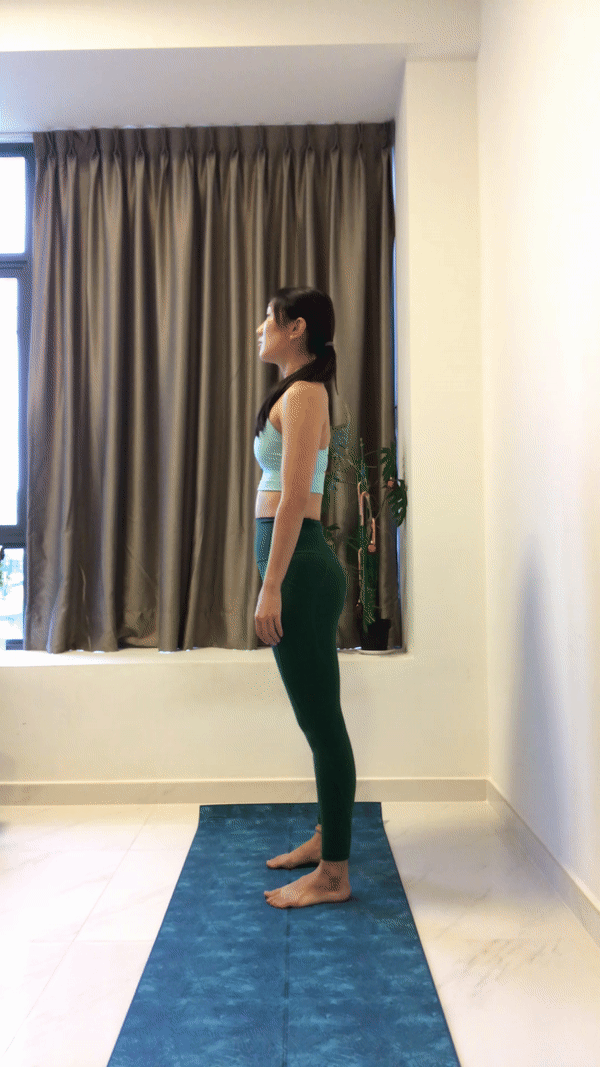
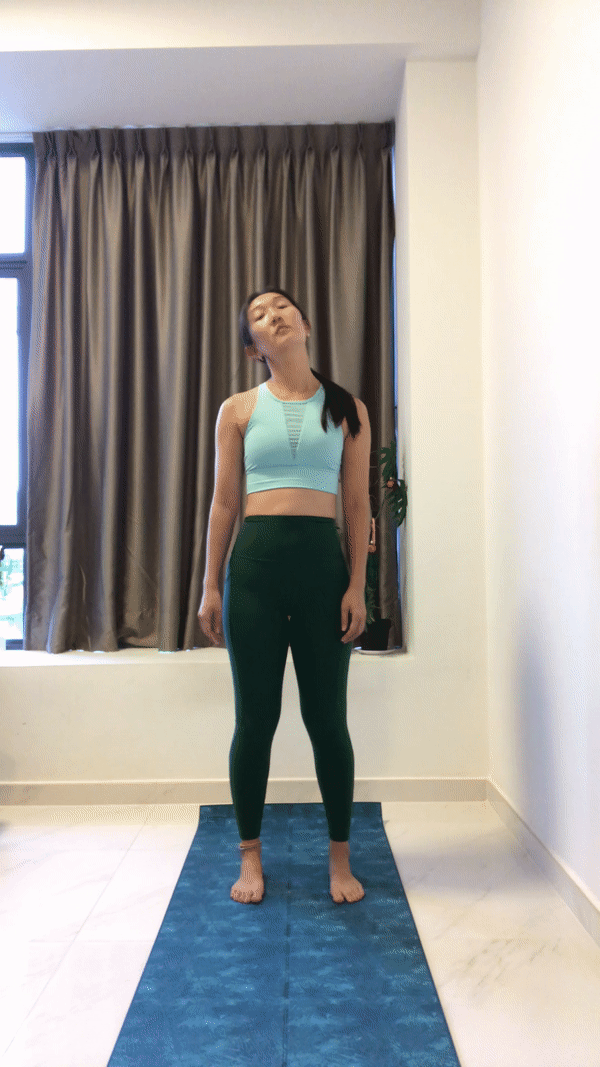
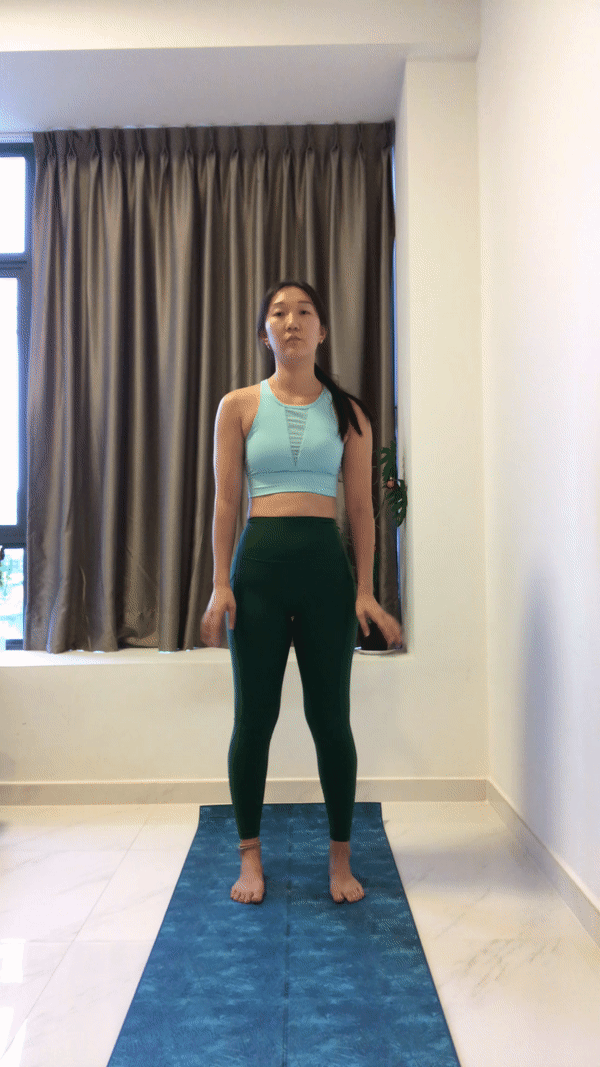
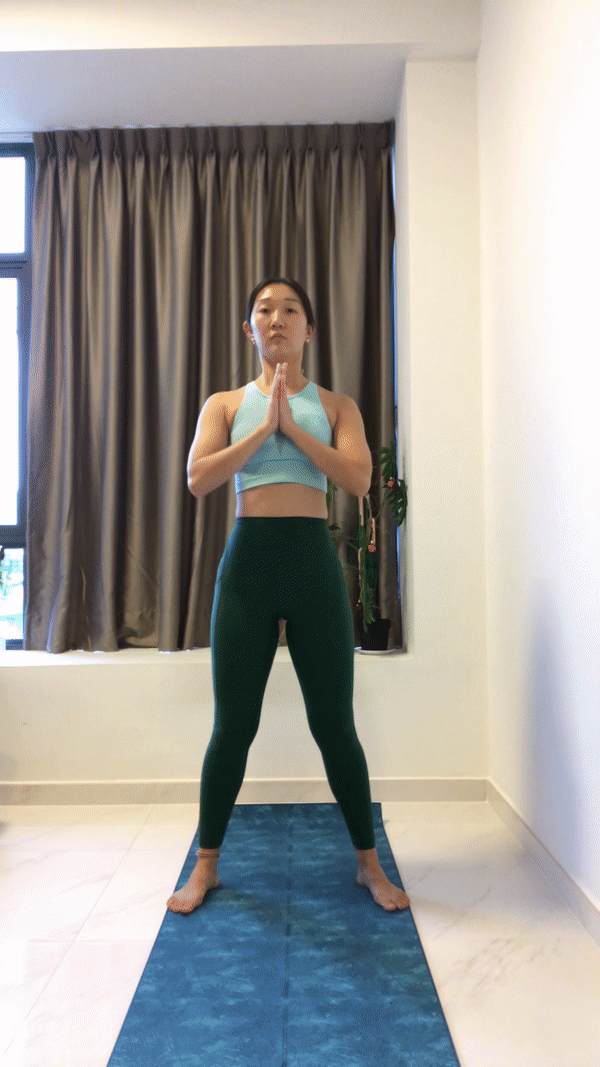
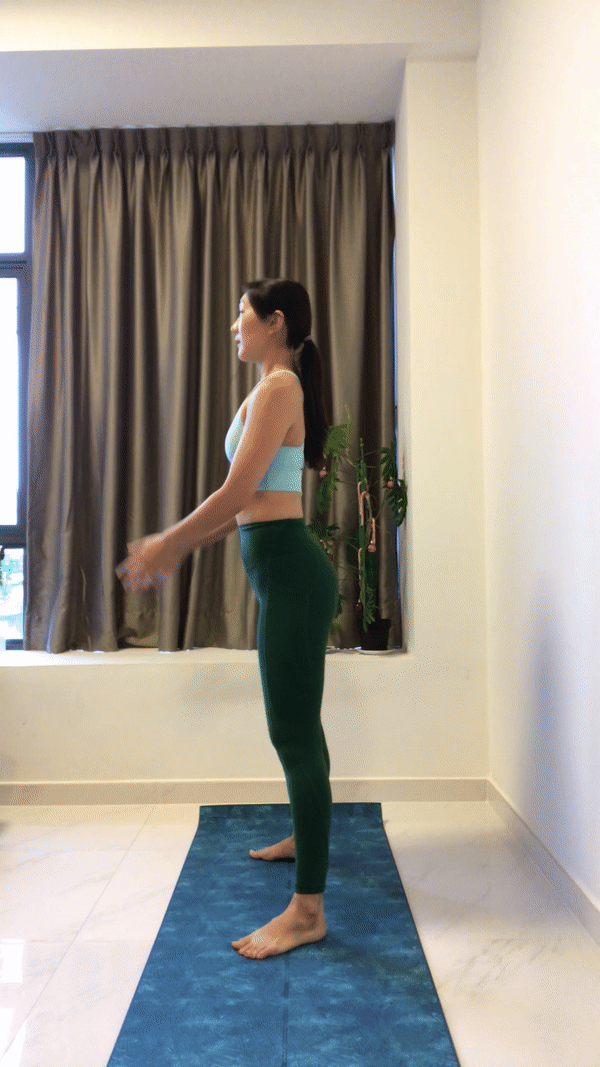
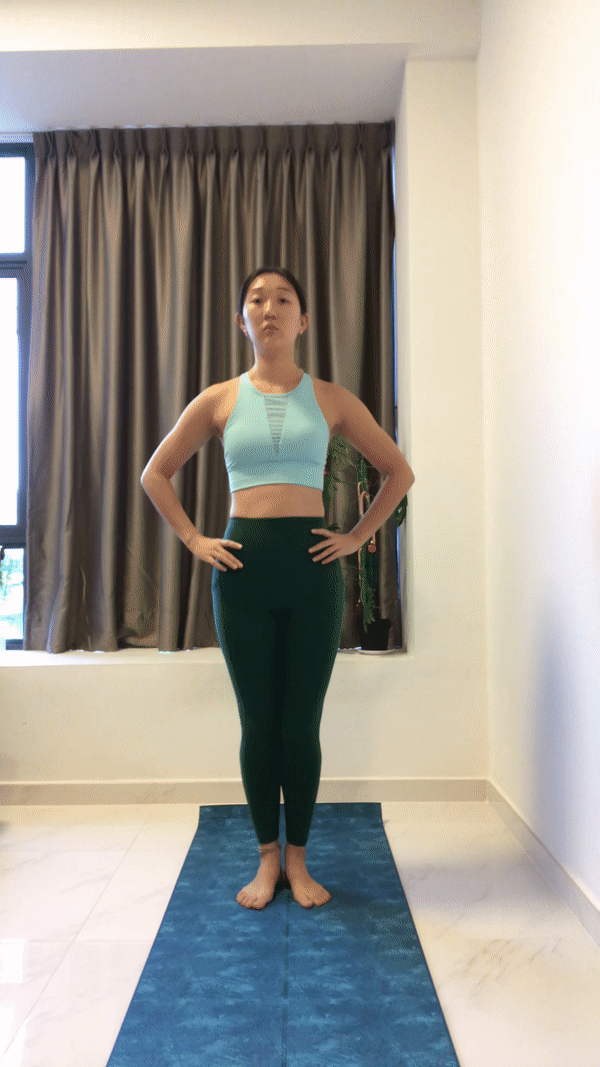
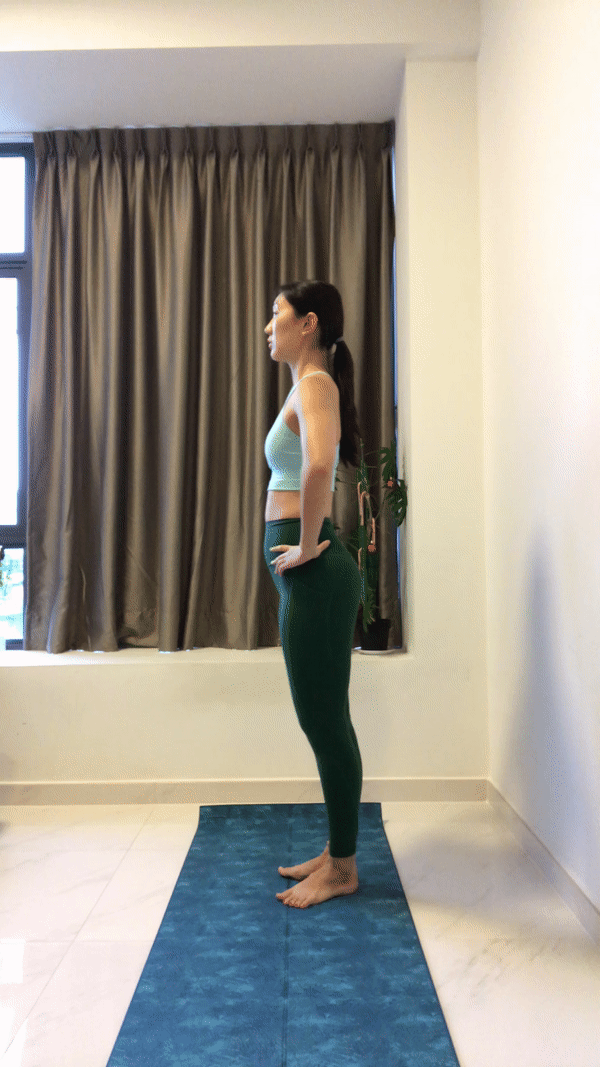
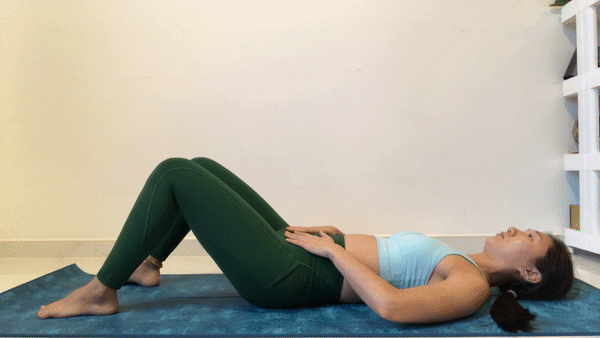
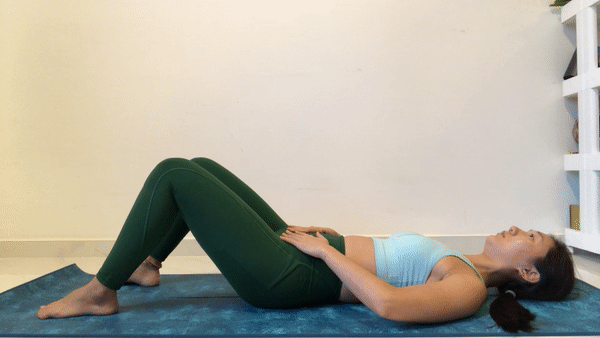
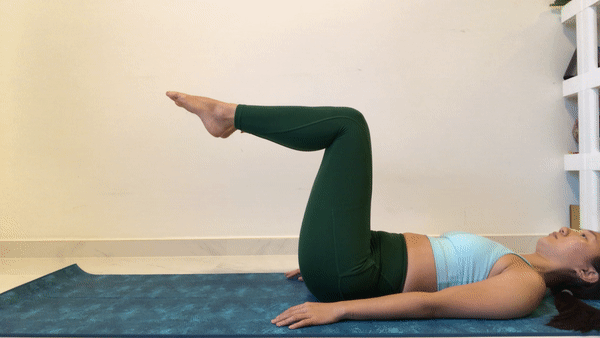
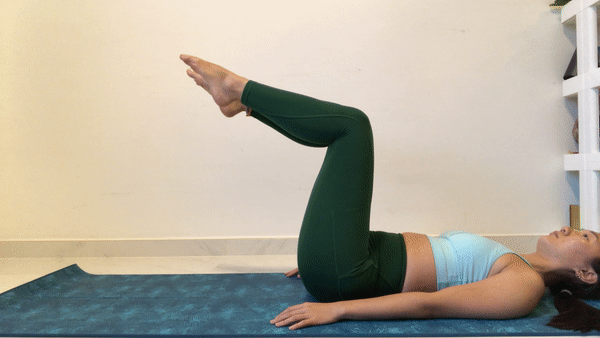
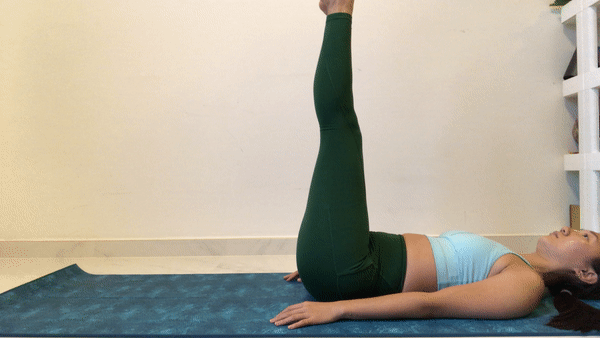
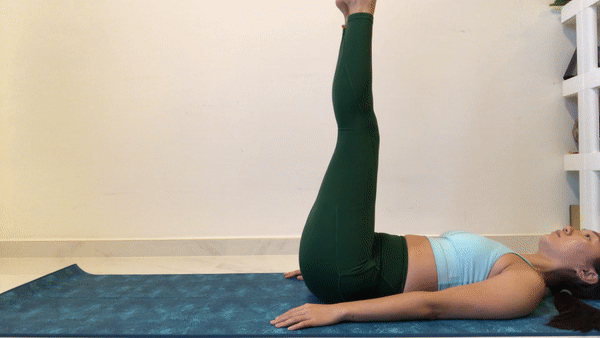
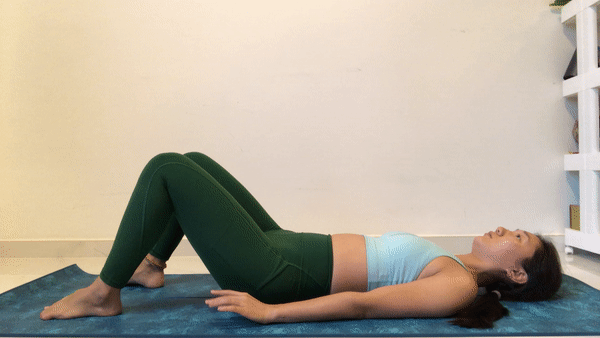
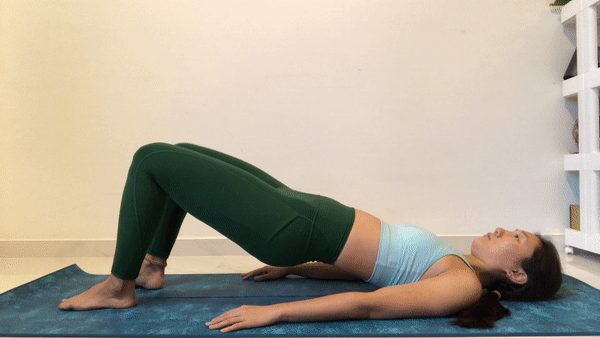
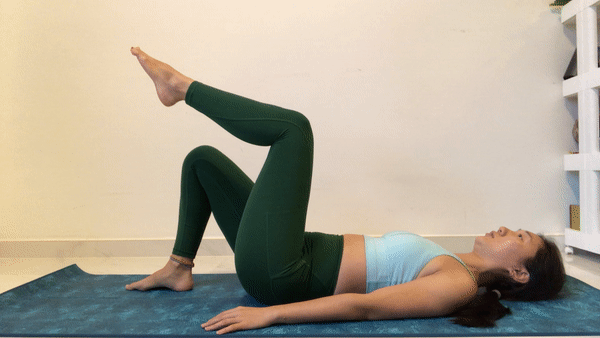
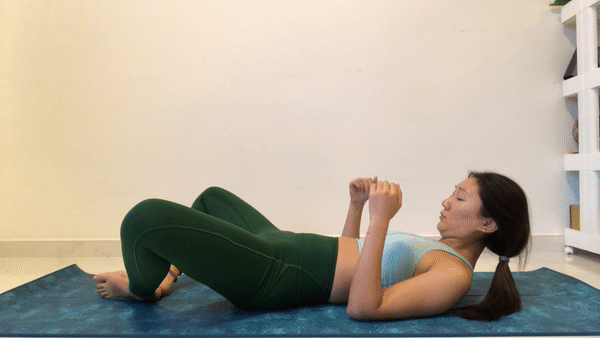
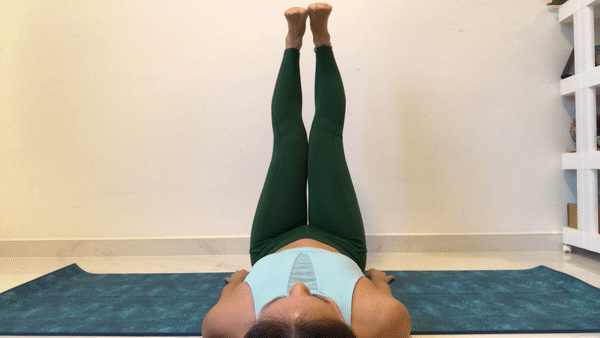
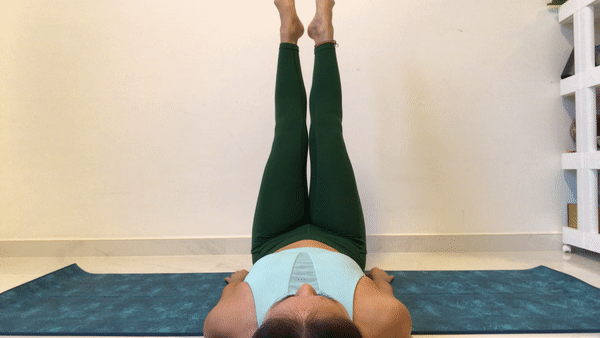
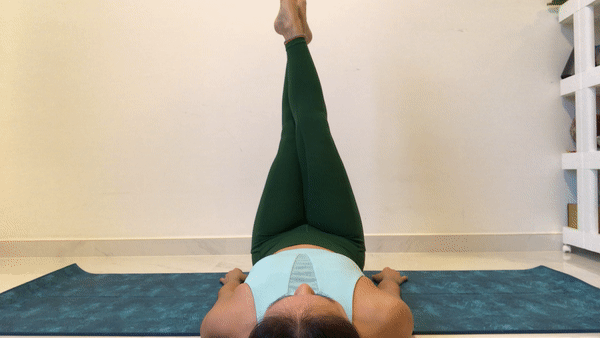

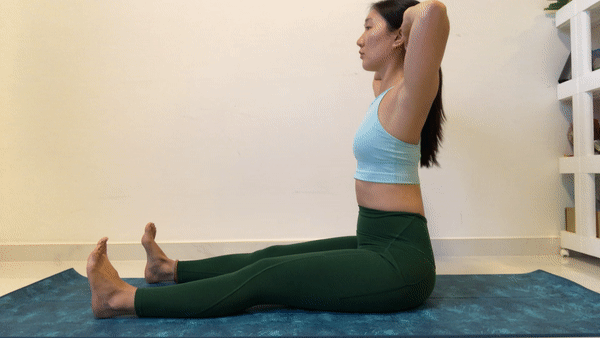
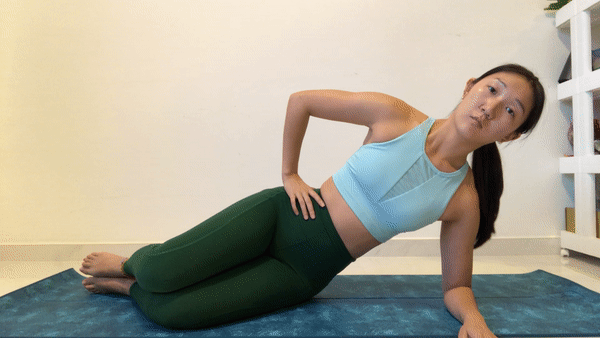
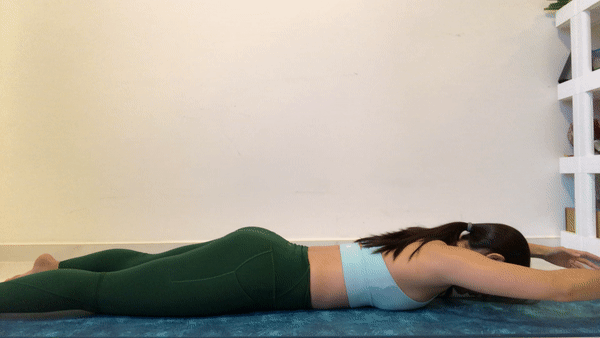
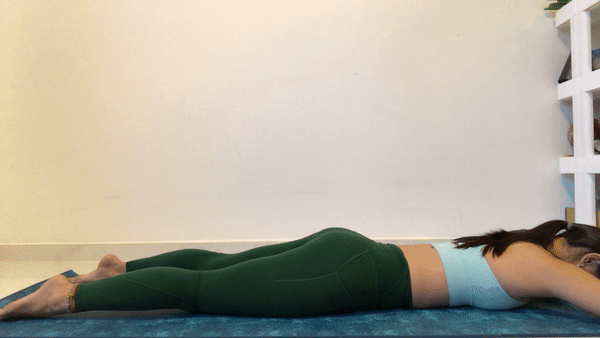
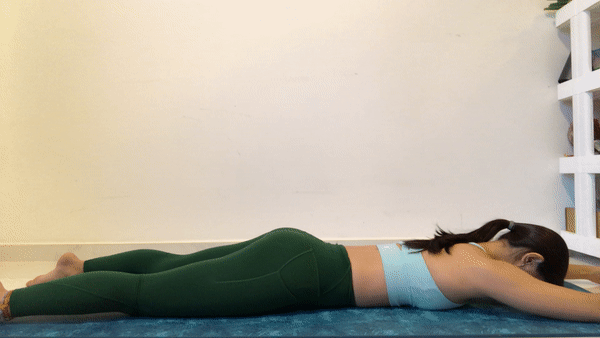
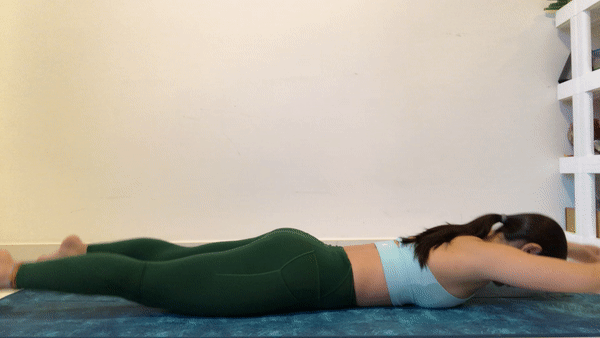

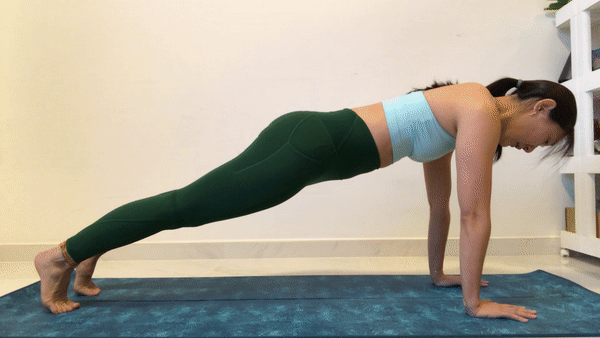
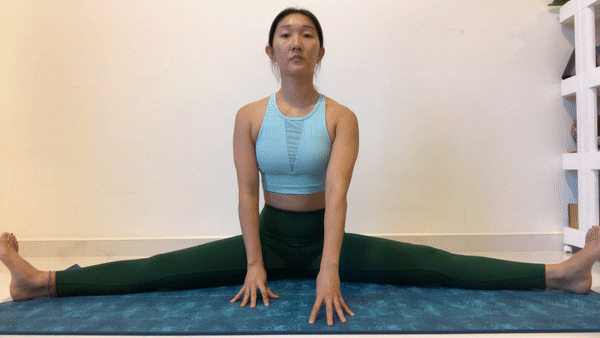
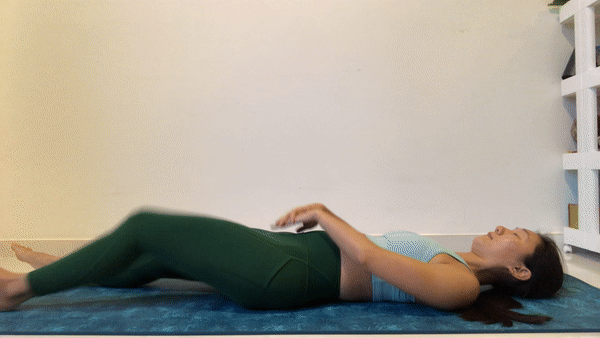
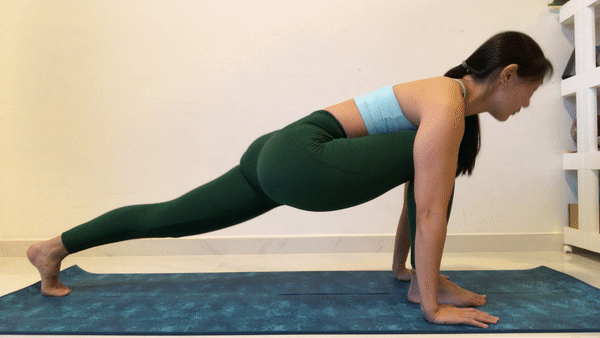
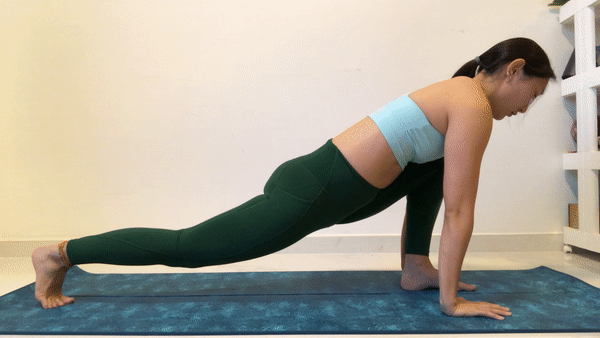

Comments